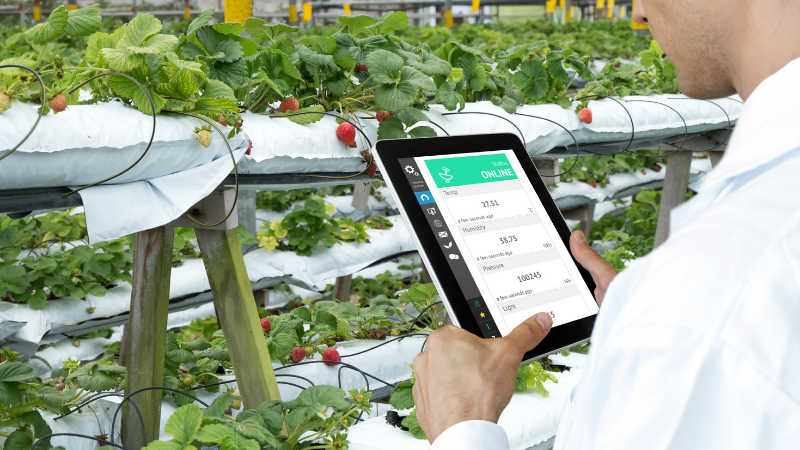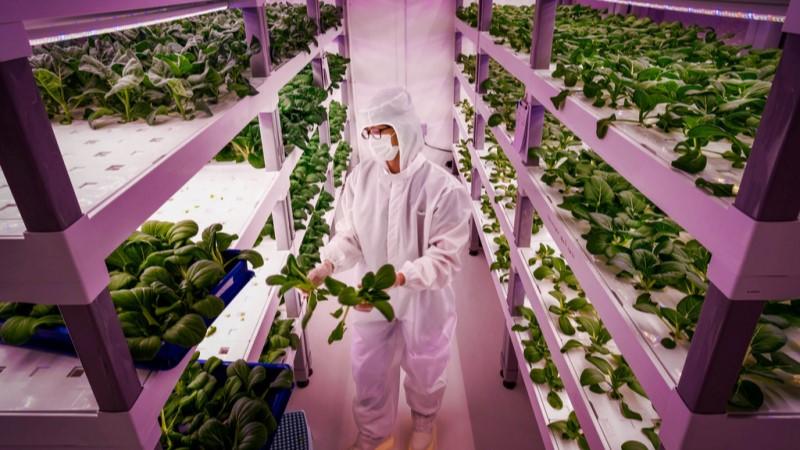Feeding the future with sustainable production
Nowadays we’re all more aware of the environmental impact of the food we eat. From food miles – the sometimes huge distances our food travels before it reaches our plates – to the changing climate and the impact that has on agriculture, new solutions are needed to make farming more sustainable so we can continue to feed a growing global population.
Forget horizontal, think vertical
Imagine a farm that’s growing crops, maybe lettuce, carrots, or wheat. Chances are you’re thinking of fields stretching out into the distance with rows upon rows of plants. The trouble is, fields of this size obviously can’t be located in urban centers, so the harvest will always have to be transported over long distances to get to us hungry consumers.
It’s time to think differently: vertical farming takes this horizontal idea of farming and turns it 90 degrees, growing crops in vertically stacked layers in carefully controlled conditions that optimize plant growth. Obviously, this saves a lot of space, which means crops can be grown in dense urban centers close to where they will be consumed, reducing the food miles associated with our lunchtime salad.
Growing more food in less space
 Taking crops inside has other benefits too, protecting the plants from an uncertain climate, reducing the need for harmful pesticides, and allowing food to be grown all year round. Yields are considerably higher than those achieved with traditional agriculture as a clever system of advanced sensors, data modeling, and artificial intelligence can help to ensure the environment is perfect for growth.
Taking crops inside has other benefits too, protecting the plants from an uncertain climate, reducing the need for harmful pesticides, and allowing food to be grown all year round. Yields are considerably higher than those achieved with traditional agriculture as a clever system of advanced sensors, data modeling, and artificial intelligence can help to ensure the environment is perfect for growth.
With no need for sun, soil, or acres of land, vertical farming is also less resource-intensive in other ways. For example, companies like Fifth Season in Pittsburgh, Pennsylvania use 95% less water than traditional farming. With water scarcity being a real threat for the future, this gives us an opportunity to increase agricultural sustainability while still being able to pile food onto our plates.
Click for the Fifth Season success story »
The perfect conditions for growth
 Along with vertical farms, smart greenhouses are another example of controlled environment agriculture (CEA), now one of the fastest-growing segments in food markets around the world. Companies like Damatex provide high-end computerized climate control systems that farmers can use to bring their farming into the future, with real-time, autonomous environmental monitoring that maximizes yield and increases crop quality – all while using less energy and resources.
Along with vertical farms, smart greenhouses are another example of controlled environment agriculture (CEA), now one of the fastest-growing segments in food markets around the world. Companies like Damatex provide high-end computerized climate control systems that farmers can use to bring their farming into the future, with real-time, autonomous environmental monitoring that maximizes yield and increases crop quality – all while using less energy and resources.
Sensors, transmitters, and probes allow optimum growing conditions to be achieved with a high degree of precision, reporting back on environmental conditions like humidity and temperature and giving the data needed for artificial intelligence to monitor and adjust any individual factor that needs changing. The better the climate control, the lower the cost of production and the more consistent the crop quality – making our food not only more sustainable but tastier too.
Click for the Damatex success case »
Learn more: controlled environment agriculture »


Comment
Add new comment